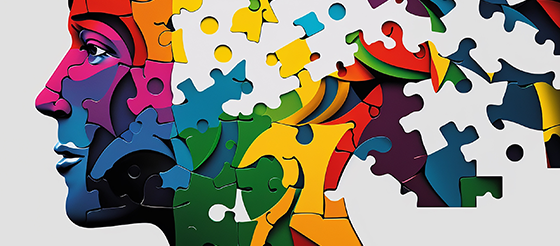Understanding Behavioral Chain Analysis
Behavioral Chain Analysis is a systematic and analytical approach to exploring the intricate links between a specific behavior chain's antecedents, behaviors, and consequences. It recognizes that behaviors do not occur in isolation but are interconnected sequences influenced by various factors. By deconstructing these chains, individuals can better understand the triggers, reinforcements, and maintaining factors contributing to their behaviors.
The Process of Behavioral Chain Analysis
- Identifying the Target Behavior: The first step in BCA is to define the target behavior that will be analyzed clearly. It could be an undesired behavior that an individual wishes to understand and change or a desired behavior that they want to reinforce and maintain.
- Breaking Down the Behavior Chain: Once the target behavior is established, the next step is to break down the behavior chain into smaller components. This involves identifying the antecedents, the actual behavior, and the consequences. This process allows individuals to gain a comprehensive understanding of the entire sequence.
- Examining Antecedents: Antecedents are the events or circumstances that precede behavior. They can be internal (thoughts, emotions, sensations) or external (situations, environmental triggers). Through careful analysis, individuals identify the antecedents that influence a specific behavior. This step helps recognize patterns and understand contributing contextual factors.
- Analyzing Behaviors: The focus then shifts to the behavior itself. By examining the actions, thoughts, and emotions associated with the target behavior, individuals gain insights into the functional aspects of the behavior. They explore the purpose the behavior serves, the thoughts or beliefs related to it, and the immediate gratifications or relief it provides.
- Unraveling Consequences: The final step involves analyzing the consequences that follow the behavior. This includes both immediate and long-term consequences. Individuals identify the reinforcements (positive or negative) that maintain the behavior and examine any unintended consequences that may reinforce it further.
Applications of Behavioral Chain Analysis
- BCA serves as a vital tool in behavior modification. By understanding the specific factors contributing to a behavior, individuals can identify potential intervention points and develop strategies to change or replace the behavior with more desirable alternatives.
- BCA can be applied to problem-solving by systematically analyzing the chain of events leading to problem behavior. Individuals can develop effective solutions, modify their responses, and implement preventive measures by understanding the triggers and consequences.
- BCA provides a framework for self-reflection and introspection. By objectively analyzing one's behavior chains, individuals gain self-awareness, identify patterns, and recognize the factors influencing their actions. This self-awareness paves the way for personal growth and empowers individuals to make conscious choices.
An Example of a Behavior Chain Analysis

- Identifying the Target Behavior
- Substance Use
- Breaking Down the Behavior Chain
- The antecedents are factors that contribute to substance use, such as stress, social situations, availability of the substance, negative emotions, or peer pressure.
- The behavior is engaging in substance use, which involves acquiring, preparing, and consuming the substance.
- The consequences of substance use can be both immediate and long-term.
- Immediate consequences: relaxation, temporary relief from stress or negative emotions, altered mood or perception, and peer acceptance
- Long-term effects: addiction, health issues, strained relationships, legal problems, or impaired cognitive functioning
- Analyzing Antecedents
- Stress: High levels of stress, whether related to work, relationships, or personal challenges, can act as a trigger for substance use.
- Social Situations: In environments where substance use is prevalent, such as parties or social gatherings, it may create social pressure or temptation.
- Availability: Easy access, either through personal possession or proximity to places where it is readily available, can increase the likelihood of substance use.
- Negative Emotions: Experiencing negative emotions such as sadness, anxiety, or frustration may lead to using substances as a means of self-medication or temporary escape.
- Analyzing Behaviors
- Acquiring Substances: seeking out and obtaining the substance, which may consist of contacting dealers, visiting specific locations, or asking friends.
- Preparing & Consuming Substances: preparing the substance for consumption (e.g., rolling a joint, measuring out a dosage) and consuming it through smoking, ingesting, or other methods.
- Unraveling Consequences
- Immediate effects such as altered mood, euphoria, relaxation, reduced stress, or temporary escape from negative emotions.
- Engaging in substance use in social situations can lead to acceptance, a sense of belonging, or peer approval.
- Substance use can have long-term consequences, including addiction, physical and mental health issues, strained relationships, academic or occupational problems, legal ramifications, financial difficulties, and an overall negative impact on quality of life.
Conclusion
Behavioral Chain Analysis offers a powerful lens through which individuals can understand, dissect, and modify their behaviors. Individuals gain valuable insights into their actions by deconstructing behavior chains into smaller components and examining the antecedents, behaviors, and consequences. BCA is a transformative tool for self-reflection, problem-solving, and behavior change. Through the systematic analysis of behavior chains, individuals can make informed decisions, modify their responses, and embark on a path of personal growth.
Additional Resources on Behavior Chain Analysis Training
Training
- Comprehensive Dialectical Behavior Therapy
- Introduction to Dialectical Behavior Therapy
- Dialectical Behavior Therapy Overview for Administrators
- Assessment & Management of Suicidal Clients
Blogs
- Understanding Behaviorism
- Reinforcement & Punishment
- Interventions Based on Operant Conditioning
- Getting Rid of a Behavior You Don’t Like
Research
- Effective or Not Effective? Dialectical Behavioral Therapy Skills in a Correctional Facility
- It’s difficult, but you are doing a great job: The effect of interviewer’s support on child abuse victim’s reluctance in interviews.
- Getting a second chance: Public support for reintegrative and disintegrative shaming for ex-offenders






















